Until recently, it wasn’t easy being green for any gem except emerald. Things began to change when tsavorite came on the scene in the early 1970s. Thanks to sponsorship by Tiffany’s, this East African green garnet set a second standard for green gems. Being cheaper than emerald certainly helped tsavorite break the color barrier. But lower price alone can’t explain tsavorite’s impact. After all, lots of other green gems like tourmaline and peridot were far cheaper than this garnet.
No, the gem had to boast more of an edge over emerald than price. And it did: better clarity, brilliance and hardness. Plus, color that held its own against all but the finest emerald. Then, when source mines in Kenya and Tanzania started turning dry, a funny thing happened. Instead of switching back to emerald, the gem trade found for the first time that jewelers wanted, of all things, a tsavorite substitute. At first, look-alike chrome tourmaline filled the bill—before becoming nearly as scarce and expensive as the garnet it was meant to replace.
By now, converts to tsavorite were hooked on the kind of bright, rich color it provided. So they began to clamor for still another green garnet stand-in. Peridot was too yellow. Most other tourmalines were either too light or too dark.
That’s when specialists in esoteric gems began dropping mentions here and there of chrome diopside, a virtual unknown from, among other places, Finland and Kenya. But these dealers didn’t dare make a big ado over this gem because supplies were too limited to support demand. Worse, says dealer Ary Reith, P. Gems Co., New York, “Most material that we saw had a color similar to that of peridot—nothing like the deep green everyone was looking for.”
Then, in 1988, rumors of a momentous new find of chrome diopside in Russia started circulating in the trade. Dealers who saw this material when it first surfaced in Europe raved about the resemblance of its color to that of tsavorite and chrome tourmaline and raved as much about its price: only a fraction of these gems. A new rush was on.
The Big Find
Chrome diopside is part of a large family called “pyroxene.” The diopside branch gets its name from a Greek word, diopsis, meaning “to have double appearance”—no doubt a reference to the species’ “pleochroism” (the tendency of certain gems to show different colors when viewed in different crystal directions).
Although it comes in cat’s-eye form from Burma and star form from India, diopside is mostly seen in green, yellow or reddish-brown colors and was until now considered a collector’s gem. Of its 20 or so known occurrences (many in North America), more than half—among them, Madagascar, Austria and Italy—produce green diopside. Nevertheless, only four countries mine the chrome variety with its intense green. Of these, Russia was long credited with producing fine chromes, although Finland’s stones seemed to have been the most prized.
Now, however, Russia has displaced Finland as the premier locality for chrome diopside—from the standpoint of both quantity and quality. Preliminary output from a strike made around 1987 close to and stretching across its border with Afghanistan earned Russia No. 1 status.
No one knows just how large the new find is. Author Joel Arem, one of the first American dealers to buy the Russian material in bulk, estimates top output at around 15 to 20 kilos (equal to 15,000 to 20,000 carats of cut stones) a year, enough to give the gem “borderline status” as a jewelry stone. But Arem, who operates a gem importing business in Gaithersburg, Md., adds, “Attaining even borderline status is a major triumph for a rarity like chrome diopside.”
Many of Arem’s fellow exotic gem experts share his optimism. One of them, Ary Rieth, was so impressed with the goods Russia’s U.S.-based representatives showed him in January 1989 that he bought everything offered him—several thousand carats. “It was just too good an opportunity to miss,” he says.
Convinced the new find was sizeable enough to elevate chrome diopside from collector to jewelry gem, Riech shipped most of the rough he purchased to Bangkok where he had it cut just about 50/50 into calibrated faceted and cabochon stones suitable for volume manufacture.
Since then, Rieth has been joined by mass-market specialists like Adris Oriental Gems in New York who have been instrumental in triggering chrome diopside boomlets in the worlds of both Kmart and yuppie shoppers far larger than that among collectors. In 1991, QVC, the cable television shopping network, and The Sharper Image, the mail-order innovator, ran extensive promotions of the gem.
Soft to a Fault
One reason dealers are so receptive to chrome diopside is its price. Better-to-fine faceted stones in sizes between 2 and 5 carats are currently selling for between $30 and $35 per carat—easily 1/10th to 1/15th the prices of their chrome tourmaline counterparts. Prices for comparable-grade cabochons in the most requested sizes, 8mm x 9mm to 10mm x 8mm, are even less—$20 to $25 per carat.
Whether one is buying cabochon or faceted chrome diopside, it will be exceedingly difficult to find in sizes over 10 carats; above 15 carats, the gem is practically impossible to obtain. And even when a very large stone comes on the market, chances are it will be too dark (chrome diopside tends to look color increasingly somber as sizes get bigger). So if fine color is your primary objective, you’ll probably have better luck with sizes from 2 carats down to melee.
In any case, the paucity of large chrome stems from the fact that this gem is troublesome to cut—plagued by cleavage (crystal plane weakness) and brittleness. These problems usually restrict cutters to relatively small yields—often as little as 6%, says Ketan Dholakia of Adris Gems.
The upshot: Chrome diopside’s fragility keeps it cheap. With a hardness of 5.5 to 6.5 on the Mohs scale—compared to the 6.5 to 7 and 7 to 7.5 hardnesses respectively of tsavorite and chrome tourmaline—it could be a victim of wear and tear if set in rings. But don’t be too alarmed. After all, chrome diopside’s hardness is identical to that of opal, long a ring staple. So caution customers about its softness and instruct them how to wear it in a non-abusive manner. At current prices, the rewards of owning chrome diopside far outweigh the risks.
Please note: this profile was originally published in 1992 in Modern Jeweler’s ‘Gem Profiles/2: The Second 60’, written by David Federman with photographs by Tino Hammid.
The 3-carat chrome diopside shown in the header image is courtesy of House of Onyx, Greenville, Ky.






